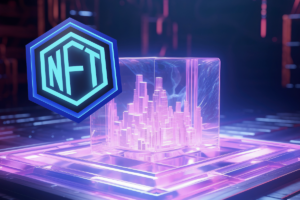Building an online community is a lot of work. Gamification can make the process more manageable, even if it requires solid upkeep. Thankfully, platforms can help automate this process, allowing builders to create a close-knit group of like-minded individuals.
Gamification Creates Community Sentiment
Anyone who has ever played an online video game will often feel compelled to complete tasks, quests, and objectives. These may come as daily challenges, world quests, battle orders, etc. But, regardless of the name, there is one common theme: ensure players have a reason to come back and, preferably, engage with other users. A similar mindset applies to other online activities, as building a community is essential for brands to survive long-term.
That is often easier said than done, despite the many powerful technologies at the disposal of builders. Introducing concepts like leaderboards, badges, achievements, and challenges is easy on paper but tricky in reality. It requires robust infrastructure and constant upkeep, cutting into precious resources. In an ideal world, builders focus on enhancing their products or service and leave the rest to automation. But, unfortunately, that idyllic world isn’t within reach (yet).
Most brands and builders need more financial resources to establish a multi-person team to focus on these gamification aspects. As such, they often have to make compromises, which makes it harder to create a community and engage them. In the Web2 era, too many centralized platforms and services prevent developers from tapping into global communities. All of that can – and potentially will – change in the Web3 world if the necessary infrastructure becomes accessible.
CRM-Focused Web3 Platforms To The Rescue
Like with blockchain and crypto, Web3 is a sprawling industry focusing on many different ideas, concepts, and implementations. However, most industry veterans agree that gamification will remain one of the more prominent tools. Seeing people rank on leaderboards, flaunt their newly-earned badges, and complete quests is fun. Moreover, these concepts can apply to any aspect of life, including work, shopping, finance, education, social activity, fitness, etc.
Giving the gamification aspect a Web3 overhaul will require better infrastructure. Markets may want to explore 3RM, a solution capable of linking with major communication channels and single-dashboard management. Kazm is a powerful solution for customer relationship management and helping brands figure out how people interact with new offers. Migrating an existing community becomes straightforward with Beyond, a tool to manage and scale communities and engagement.
For brands and game developers, Xternity provides a lot of useful tools. The platform enables gamification integration without requiring extensive knowledge or dedicated Web3 development. All-in-one solutions are crucial to onboard the Web2 users to Web3, and taking a no-code approach makes integration gamification elements much more accessible. In addition, the team plans to introduce automation tools to ensure everyone can make the most of this new opportunity.
One must recognize the potential of Web3 communities. When people connect and share ideas, they can forge new work relationships, friendships, etc. Moreover, no central parties oversee or hold back users, as everyone is equal. As a result, finding like-minded people with similar interests will become easier than ever. In addition, users remain in control of their data, while brands can filter out much of the “noise” associated with Web2 marketing.
User Acquisition Remains Paramount
In the Web2 world, user acquisition is possible through many tried-and-tested approaches. However, not all users are alike, and penetrating the target audience is very tricky. Unfortunately, that leads to a skewed -cost-effect ratio that often leaves brands and builders frustrated. There is no reason to burn through a significant part of the budget and not see desired results. Instead, one should incentivize users to try new products, services, and platforms. Gamification may hold the key to unlocking that goal.
Furthermore, the gamified approach ensures one can build a community with a purpose and goal. That goal must align with the developer/brand’s vision for the project. The core concept of a Web3 project is to be community-owned, instead of community-oriented. Without a clear purpose and goal, there can be no united front.
Author
-

Immersive tech enthusiast, diving into the NFT currents reshaping the Metaverse.




